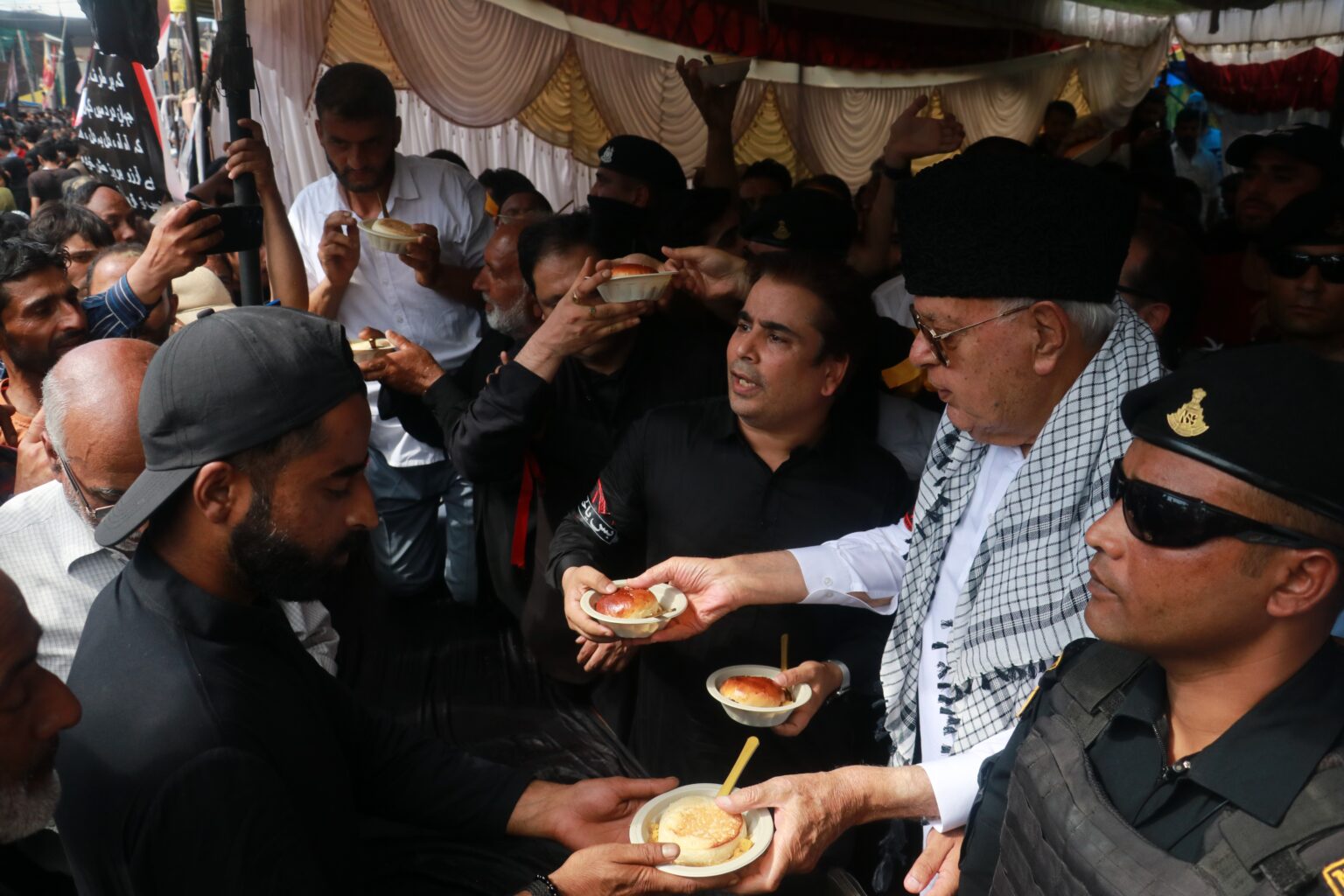The predominantly black colours, with some red, green, white and yellow were seen across Srinagar—amid reverberating chants of ya Hussain—as the 34-year long ban on Muharram was revoked by the Jammu and Kashmir administration,
Jaspreet Kaur
The Jammu and Kashmir administration on Wednesday decided to allow the 8th Muharram procession through the traditional route of Srinagar on Thursday, the 27th of July, after a ban of 34 years.
Despite the decades-long ban, Shia mourners would take out processions from Guru Bazar each year, defying restrictions, which would invariably end up in confrontation with local police and paramilitary forces. Smaller processions were, however, permitted in some Shia-pockets of the state, including in the districts of Baramulla, Kulgam, Leh and Kargil. During the month of Muharram, many streets of the Valley would be lined with black and red flags.
The permission for this year’s 8th Muharram procession from Guru Bazar to Dalgate via Budshah Kadal and M.A Road was granted from 6 am to 8 am. Traditionally, Shia mourners organise two big processions in the city. The 8th Muharram procession starts from Shaheed Gunj, passes through city centre Lal Chowk and ends at Dalgate, while the 10th Muharram procession passes through Shia-majority areas of the city.
Muharram signifies the start of a new Islamic year (Hijri). This year it began on July 19th. This month is also referred to as ‘the month of Allah’. The month of Muharram is one of the four sacred months of the Islamic calendar, and is of particular significance, with warfare strictly forbidden. Its importance is suggested by its name, with ‘Muharram’ literally translating to ‘forbidden’. It is considered the second most pious month after Ramadan or Ramzan.
The two of the most important events that have occurred during the month of Muharram are: the Day of Ashura and the Battle of Karbala. The Day of Ashura marks the day on which the Prophet Musa (Moses) and the Israelites were saved from Pharaoh by splitting the Red Sea, which they passed through. This event is commemorated by Sunni Muslims.
The Battle of Karbala occurred on 10 October 680 AD (61st year of the Islamic calendar) in the city of Karbala, Iraq. It was between the army of the second Umayyad dynasty, Caliph Yazid I, and the family and followers of Imam Husayn Ibn Ali, the grandson of the Prophet Muhammad (PBUH). Imam Hussain, the beloved grandson of the Prophet, was brutally martyred.
The Shia Muslims see Ashura as the day to mourn the martyrdom of Hazrat Imam Hussain (the grandson of the Prophet Muhammad) at the battle of Karbala. As a mark of mourning, many Muslims observe fasts. The members of the Shia community usually wear black clothes. The mourning period starts from the first night of Muharram and goes on for ten consecutive nights.
Shia community of Kashmir is an integral part of Kashmir’s culture and history, which is incomplete without acknowledging the contribution of various artisans, painters, scholars and poets of Kashmir’s immensely talented Shia community, who have contributed to the development of Kashmir’s rich artistic heritage.
The majority of Kashmiri Muslims are Sunnis, Shias roughly account for 20% of the Muslim population in Kashmir.
Jaspreet Kaur is a Delhi-based architect, urban designer, Trustee Lymewoods & Span Foundation and Consulting editor of Kashmir Newsline.
(Follow @KashmirNewsline on Twitter.)
